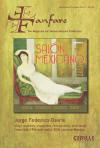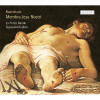Texte paru dans: / Appeared in:

Fanfare Magazine: 36:1 (09-10/2012)
Pour
s'abonner / Subscription information
Les abonnés à Fanfare Magazine ont accès aux archives du
magazine sur internet.
Subscribers to Fanfare Magazine have access to the archives of the magazine
on the net.
Accent
ACC24243

4015023242432
Consultez toutes les évaluations recensées pour ce cd
~~~~ Reach all the evaluations located for this CD
One problem in my Buxtehude cantata discography was identifying the seven verses of the Klag-Lied of BuxWV 76, since no one sings all of them. Now on this disc I finally have verse 3 (“Solcher ist mir”) along with the first and last verses; verse 2 is on Eufoda 1294, verse 4 is on Ricercar 046023, and verses 5 and 6 are on Dacapo 8.224062 (now Naxos 8.557251), not counting a few duplicates. There are two parts to this work, Mit Fried und Freud and Musz der Tod. The former is funeral music written in 1671 on the death of Meno Hanneken in Lübeck; the latter is a lament written in 1674 on the death of his own father, which occasioned the publication of the paired works. The two halves are generally recorded separately; only Hans-Jörg Mammel (Fanfare 35:1) has sung both, and he included only the first verse of the Trauermusik and verses, 1, 6, and 7 of the Klag-Lied, while Kuijken performs all four verses of the former along with verses 1, 3, and 7 of the latter, as noted already. Jos van Veldhoven (30:1) almost duplicates the entire present disc, but onetime colleague Brian Robins failed to indicate the number of verses for the Klag-Lied, although he does say that the Trauermusik is only instrumental.
The main
work is the much-recorded set of seven cantatas, each one focused on a
wounded member (feet, knees, hands, etc.) of the crucified Savior. The
sentiments of the texts reflect Pietism, a brand of Christian devotion
prevalent in Protestantism in the 17th century but dating back to the Middle
Ages. There are at least 17 recordings of this work, many of them at least
satisfactory. Kuijken uses six singers and eight players on period
instruments to provide one of the best small-ensemble performances on
record. This formation matches several other recent versions exactly, Harry
Christophers (34:1) being especially fine; one must go back to Erik van
Nevel (23:5), Masaaki Suzuki (22:2), or Diego Fasolis (21:2) for two or
three voices in the choral sections. Kuijken has the advantage of an
especially appropriate filler, so it makes a good choice for a collector who
has none of these four.
Fermer la fenêtre/Close window
Cliquez l'un ou l'autre
bouton pour découvrir bien d'autres critiques de CD
Click either button for many other reviews


